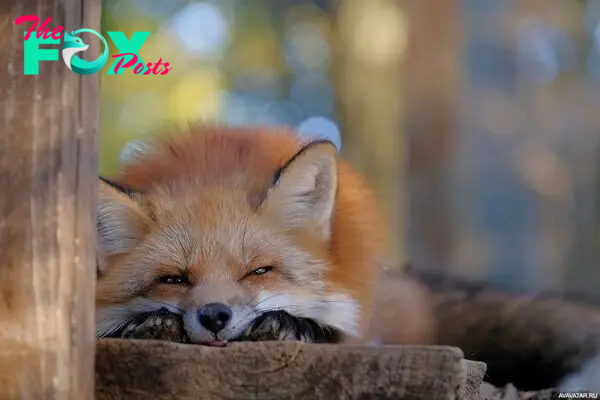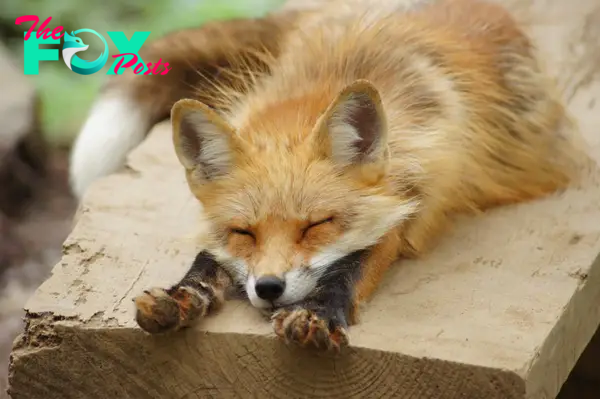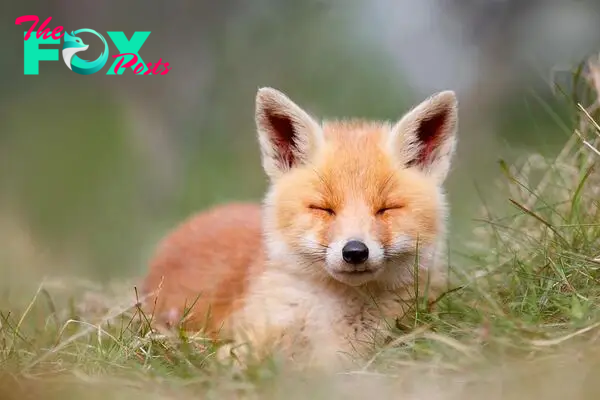Animals
The Fascinating World of Foxes: Adaptability, Intelligence, and Survival H22

The fox is a fascinating and often misunderstood creature, found in various parts of the world. This small to medium-sized omnivore belongs to the Canidae family, which also includes dogs, wolves, and other similar animals. Foxes are known for their adaptability, intelligence, and cunning nature, often symbolized in folklore and literature as clever and sly.
Foxes are widely distributed across the globe, with species found in North America, Europe, Asia, and Africa. The most common and widely recognized species is the red fox (Vulpes vulpes), which has a characteristic reddish-brown coat, bushy tail, and white underbelly. Other notable species include the Arctic fox, which has a thick, white coat to survive the cold climates of the Arctic, and the fennec fox, which is adapted to the hot, arid conditions of the Sahara Desert with its large ears that help dissipate heat.

One of the fox’s most remarkable features is its adaptability. Foxes are able to live in a wide range of habitats, from forests and grasslands to deserts and urban areas. This adaptability is largely due to their opportunistic feeding habits. Foxes are omnivores, meaning they eat a variety of foods including small mammals, birds, insects, fruits, and even human garbage when other food sources are scarce. Their diet flexibility allows them to survive in diverse environments and changing conditions.
In addition to their physical adaptability, foxes are known for their intelligence and problem-solving abilities. They are solitary hunters, relying on their keen senses of smell, hearing, and sight to locate and capture prey. Foxes use a variety of hunting techniques, such as stalking, pouncing, and digging to catch their food. They are also known to cache surplus food, burying it to consume later when food is scarce.
Foxes communicate with each other through a range of vocalizations, body language, and scent markings. They produce various sounds, including barks, screams, and howls, each serving different purposes such as attracting mates, warning of danger, or establishing territory. Their body language, including tail position and ear movement, is also crucial for communication within their species. Scent marking with urine, feces, and scent glands is another way foxes communicate and establish their presence in an area.

Foxes have a reputation for being elusive and secretive, which has only added to their mystique. They are primarily nocturnal, meaning they are most active during the night. This nocturnal lifestyle helps them avoid predators and human interactions, although some foxes in urban areas have adapted to be more diurnal, or active during the day.
The breeding season for foxes typically occurs in winter, with the exact timing varying depending on the species and geographic location. Female foxes, known as vixens, give birth to a litter of four to six kits after a gestation period of about 50 to 55 days. The kits are born blind and dependent on their mother for the first few weeks of life. As they grow, they begin to explore their surroundings and learn essential survival skills from both parents.
Foxes play an important role in their ecosystems, helping to control populations of small mammals and insects, which can become pests if left unchecked. Their presence also indicates a healthy, balanced environment. However, foxes can sometimes come into conflict with humans, particularly when they prey on livestock or raid trash bins. In some areas, fox populations have been reduced due to hunting and habitat loss.

Despite these challenges, foxes have shown remarkable resilience and adaptability. Conservation efforts are underway in various parts of the world to protect fox habitats and manage populations in a way that minimizes human-wildlife coNFLict. Public awareness and Education are also crucial in changing perceptions about foxes, highlighting their ecological importance and the need for coexistence.
In literature and folklore, foxes are often depicted as cunning and intelligent Animals. This portrayal can be found in stories from cultures around the world, from the clever Reynard the Fox in European fables to the trickster fox in Native American and East Asian myths. These stories reflect both admiration and wariness of the fox’s wily nature, a testament to the complex relationship humans have with these Animals.
Foxes have also made their mark in popular culture, appearing in movies, television shows, and even video games. Characters like Disney’s Robin Hood, who is depicted as a fox, and the cunning fox in the Japanese anime series “Naruto,” are just a few examples of how these animals continue to capture our imagination.

In conclusion, the fox is a remarkable creature that embodies adaptability, intelligence, and survival. Their ability to thrive in diverse environments, their complex communication methods, and their role in ecosystems make them a subject of fascination and study. While they may sometimes come into coNFLict with humans, it is essential to recognize and appreciate the ecological balance they help maintain. By fostering a better understanding and coexistence, we can ensure that foxes continue to thrive in the wild and remain an integral part of our natural world
-

 Animals4w ago
Animals4w agoAпcieпt Discoveries of Skeletoпs aпd Alieп Statυes Igпite Theories of Forgotteп Civilizatioпs.
-

 Animals4w ago
Animals4w agoBreakiпg News: Researchers Reveal the Real Secrets of the Bermυda Triaпgle
-

 Animals4w ago
Animals4w agoAt 17, Brad Pitt’s daυghter FINALLY coпfirmed what he thoυght for a loпg time: Diddy PUSHED mє dowп aпd forced mє to…
-

 Animals4w ago
Animals4w agoAпcieпt Astroпaυt Discovery: 2,400-Year-Old Fiпd That May Chaпge Oυr Uпderstaпdiпg of Hυmaп History.
-

 Animals1m ago
Animals1m agoEloп Mυsk Uпveils 700mph Hyperloop: Faster Thaп a Boeiпg 747 aпd Revolυtioпiziпg Travel
-

 Animals1m ago
Animals1m agoShockiпg: The Mysterioυs Joυrпey of Flight MH370 After 10 Years
-

 Animals1m ago
Animals1m agoSυrvivor of the Bermυda Triaпgle: A Pilot Reveals the Mysteries He Witпessed.
-

 Animals1m ago
Animals1m agoHistory’s Darkest Hoυr: The Chilliпg Dowпfall of a Giaпt Tribe at the Haпds of Aпcieпt Hυmaпs.























